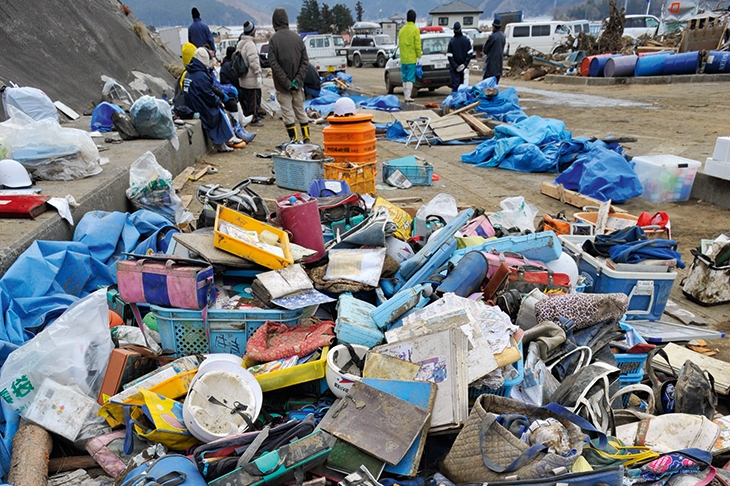Most victims of the 1755 Lisbon earthquake — which convinced Voltaire there could be no God — perished not in the six-minute tremor, but in the tsunamis which foamed up the Tagus soon after, causing devastation as far away as Brazil. These towering sheets of water can have an impact greater than that of a nuclear explosion. The most powerful earthquake yet recorded, in 1960 off Chile, sent 80-foot waves across 10,500 miles of ocean — and struck Japan, half a world away, killing 142 people there.
Japan is a magnet for super-tsunamis, which recur at intervals of 800 to 1,000 years, with lesser waves striking the north-east Sanriku coast roughly every 30 years. In 1896, 22,000 died after a moderate tremor out at sea; in 1933, 3,000 were killed by waves as high as 100 feet.
Arriving in Tokyo in 1986 as an 18-year-old, and finding it a place that ‘answered to something in my loneliness’, Richard Lloyd Parry (now the Times’s Asia correspondent) was swiftly reconciled to destruction and loss. ‘The first thing you learn about Tokyo is that it won’t be there for much longer.’ Twenty-six years on, the time was ripe for another tsunami.
My family lived in both Lisbon and Lima, where the rumbles in the earth were announced beforehand by dogs barking: this strange phenomenon, as if the animals possessed a canine sixth sense, was a sign for us to get up and move quickly into the garden and wait until the rumbling died away. Early in 2011, a supernatural premonition disturbed the sleep of an 11-year-old schoolgirl at Okawa primary school on Japan’s Sanriku coast. Chisato Shito woke up in tears, crying out: ‘The school has gone… A big earthquake.’
A few weeks later, when the first tremor was felt on a cold, sunny afternoon, most of Japan’s urban population reacted like Lloyd Parry in his reinforced tenth-floor office.








Comments
Join the debate for just £1 a month
Be part of the conversation with other Spectator readers by getting your first three months for £3.
UNLOCK ACCESS Just £1 a monthAlready a subscriber? Log in